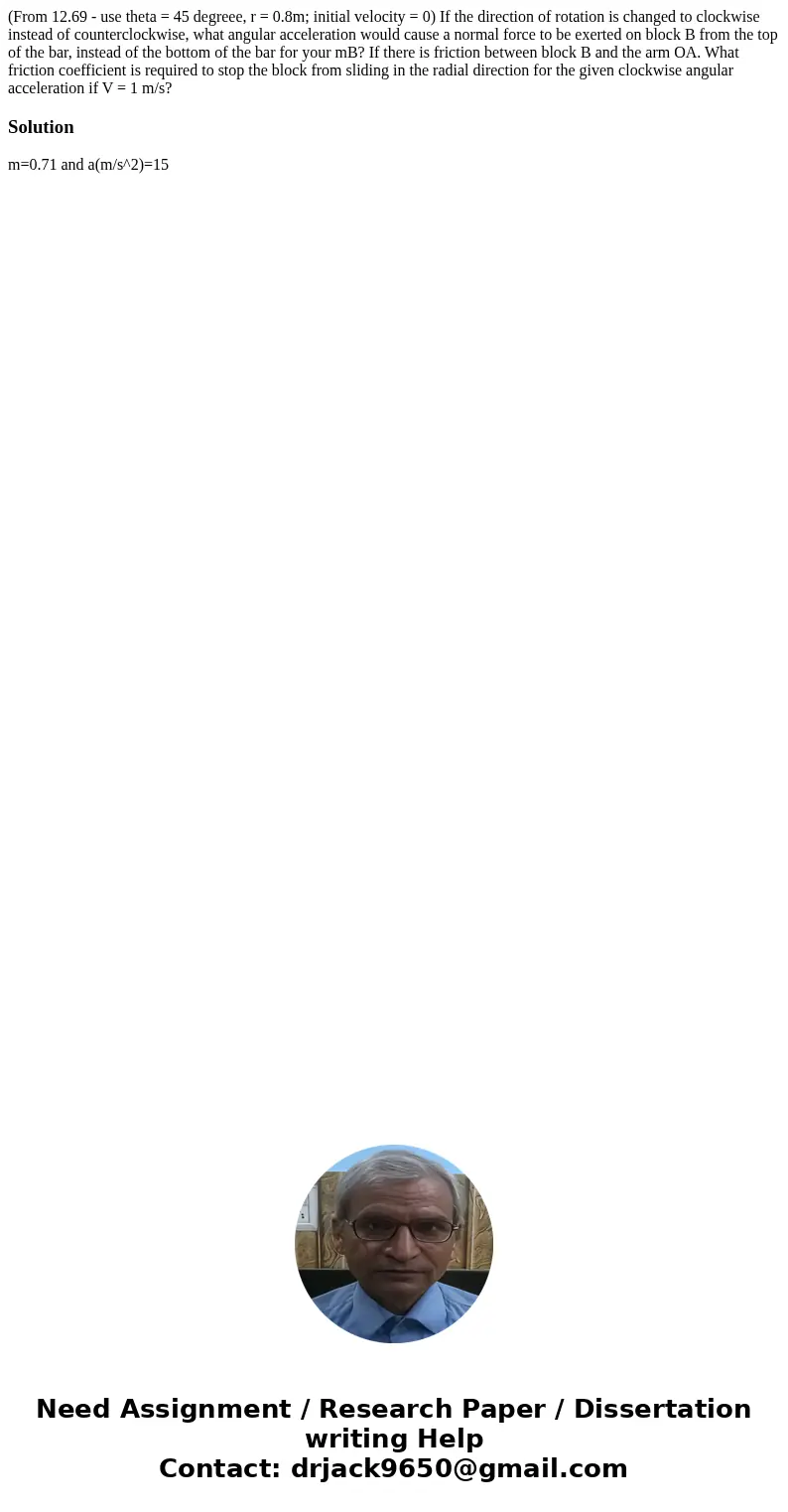From 1269 use theta 45 degreee r 08m initial velocity 0
(From 12.69 - use theta = 45 degreee, r = 0.8m; initial velocity = 0) If the direction of rotation is changed to clockwise instead of counterclockwise, what angular acceleration would cause a normal force to be exerted on block B from the top of the bar, instead of the bottom of the bar for your mB? If there is friction between block B and the arm OA. What friction coefficient is required to stop the block from sliding in the radial direction for the given clockwise angular acceleration if V = 1 m/s?
Solution
m=0.71 and a(m/s^2)=15

 Homework Sourse
Homework Sourse